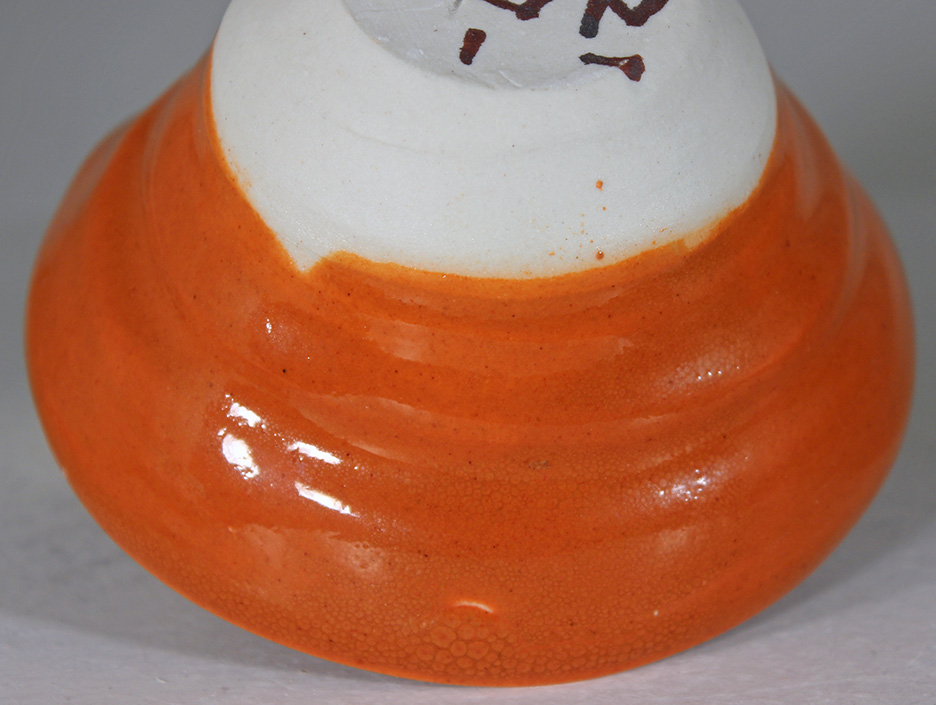High Alumina Orange
firing to cone 10 in oxidation
slow downfire at 50 deg F an hour in the interval 1850 deg F to 1700 deg F
slow downfire at 25 deg F an hour in the interval 1700 deg F to 1650 deg F
One hour hold at 1650 deg F
Here we have four more high alumina glazes, in the continuing saga of the iron orange glaze.
These glazes are perturbations of al_2015_5_MEPK, which in turn is a small tweak of my best prior glaze al_2015_10_5:
In their respective Empirical formulas, all of these glazes have alumina greater than 1.
al_2015_10_5

glaze al_2015_5_MEPK
The first glaze in this series of glazes:

We compare its empirical formula with that of the best prior glaze, which had good color but seemed just a tidge underfired.
This glaze has lower Magnesia, and slightly higher silica.
As this glaze was generated by the quick and dirty method of reducing the MgO, then replacing some EPK Kaolin with Nepheline Syenite,
the result was an increase in silica.
The result seems equally underfired (as seen by the orange peel texture), though it has better color with a thin glaze application.
In the following, we refer to this glaze as glaze I.
glaze al_2016_02_1
The primary difference between this glaze and the above glaze, glaze I, is lower alumina.
The result is only slightly less underfired, so reducing the alumina has not substantially improved the maturation of the glaze,
however it has not lost its orange color. The unevenness of the color is likely due to lower alumina.

glaze cooper_394_9_0
Modifications of the seger formula compared with Glaze I are higher alumina, higher silica and no lithia.
The color is still good, but not surprisingly, this glaze is substantially underfired.

glaze al_2015_5MMg
Compared to Glaze I, this glaze has less Magnesia, less silica and more Lithia, however none of these changes are large. Collectively though they seem to have visibly modified the glaze.
This glaze has good color, has a smoothed surface where the glaze application is reasonably thin. With such high alumina, this glaze crawls easily, and equally pits badly with an overly thick application.

inside of bowl 3 inches in diameter

outside of bowl 3 inches in diameter
From the appearance of the outside of the bowl, which had a thinner and more even glaze application, I conclude that this is finally a viable glaze with the orange color.
Further work:
I'd like a less glossy surface. Additionally less iron would likely give a better hue.